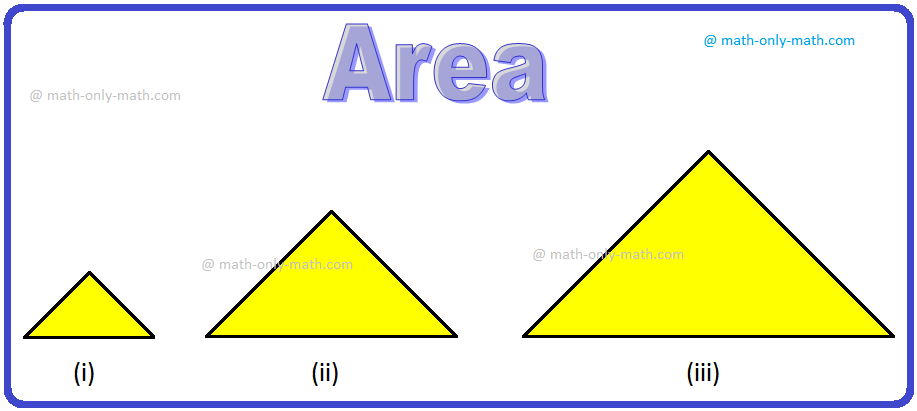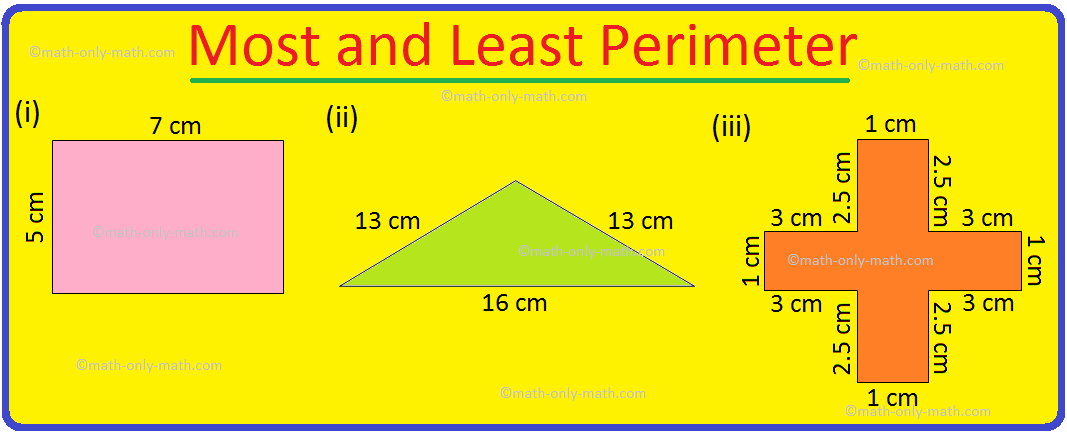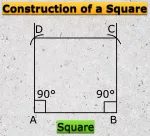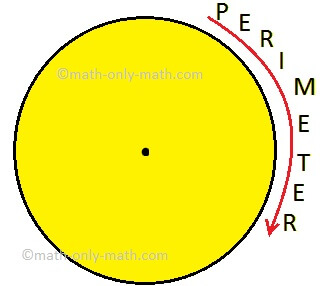Subscribe to our ▶️YouTube channel🔴 for the latest videos, updates, and tips.
Home | About Us | Contact Us | Privacy | Math Blog
Multiplication of Surds
In multiplication of surds we will learn how to find the product of two or more surds.
Follow the following steps to find the multiplication of two or more surds.
Step I: Express each surd in its simplest mixed form.
Step II: Observe whether the given surds are of the same order or not.
Step III: If they are of the same order then the required product is obtained by multiplying the product of the rational co-efficient by the product of surd-factors.
If they are of different orders then the product is obtained by the above method after reducing them to surds of the same order.
If different order surds have the same base then their product can easily be obtained using the laws of indices.
Multiplication of surds can be obtained by simply following the law of indices.
a√x×b√x=x1a×x1b=x(1a+1b)
From the above equation we can understand that if surds of rational number x are in different orders, then the product of those surds can be obtained by the sum of indices of the surds. Here surds of rational number x are in order a and b, so the indices of the surds are 1a and 1b and after multiplication the result index of x is (1a+1b).
If the surds are in same order, then multiplication of surds can be done by following rule.
a√x×a√y=a√xy
From the above equation we can understand that if two or more rational numbers like x and y are in a same order a, then product of those surds can be obtained by product of the radicands or rational numbers.
If the surds are not in same order, we can express them in same order to obtain the result of a multiplication problem. But first we should try to express the surds in simplest forms and compare with other surds that they are similar surds or equiradical or dissimilar. Whatever the surds are, we can multiply the rational coefficients. Products of surds can rational or irrational, depending upon the situations.
Like 2√3×2√3 = 3, so the product of two similar surds is rational number.
But 2√3×3√3 = 3(12+13) = 356
Now we will solve some problems on multiplication of surds to understand more on this.
Examples of multiplication of surds:
1. Find the product of 52√5 and 2√45.
Solution:
52√5 × 2√45 = 52√5×5×3×3 = 5 × 5 × 3 = 75.
2. Find the product of 7∜4 and 5∜3
Solution:
The product of 7∜4 and 5∜3
= (7∜4) × (5∜3)
= (7 × 5) × (∜4 × ∜3)
= 35 × 4√4⋅3
= 35 × ∜12
= 35∜12
3. Find the product of 32√2 and 46√3.
Solution:
32√2 and 46√3 are in order 2 and 6. As the LCM of 2 and 6 is 6, we can convert 32√2 into a surd of order 6.
32√2 × 46√3 = 3×212 × 46√3
= 3×236 × 46√3
= 3×816 × 46√3
= 36√8 × 46√3
= 3 × 4 × 6√8 × 6√3
= 12 × 6√8×3
= 126√24.
4. Find the product of 2√12, 7√20 and √32
Solution:
The product of 2√12, 7√20 and √32
= (2√12) × (7√20) × (√32)
= (2√2⋅2⋅3) × (7√2⋅2⋅5) × (√2⋅2⋅2⋅2⋅2)
= (4√3) × (14√5) × (4√2)
= (4 × 14 × 4) × (√3 × √5 × √2)
= 224 × √3⋅5⋅2
= 224 × √30
= 224√30
5. Find the product of 32√12, 2√98 and 52√27.
Solution:
32√12 × 2√98 × 52√27
= 32√2×2×3 × 2√7×7×2 × 52√3×3×3
= 122√3 × 72√2 × 152√3
= 12 × 7 × 15 × 2√3×2×3
= 1260 × 3 × 2√2
= 37802√2.
6. Simplify: 2√2 × 7∛5 × 3∜3.
Solution:
3∜3 × 2√2 × 7∛5
The orders of the given surds are 4, 2, 3 respectively and L.C.M. of 4, 2 and 3 is 12.
∜3 = 31/4 = 33/12 = 12√33 = 12√27
√2 = 21/2 = 26/12 = 12√26 = 12√64
∛5 = 51/3 = 54/12 = 12√54 = 12√625
Therefore, the given expression 3∜3 × 2√2 × 7∛5
= (3 × 2 × 7) × (∜3 × √2 × ∛5)
= 42 × (12√27 × 12√64 × 12√625)
= 42 × (12√27×64×625)
= 42 × (12√1080000)
= 4212√1080000
7. Find the product of 32√2, 53√4 and 24√8.
Solution:
32√2 × 53√4 × 24√8
= 3 × 212 × 5 × 3√22 × 2 × 4√23
= 3 × 5 × 2 × 212 × 223 × 234
= 30 × 2(12+23+34)
= 30 × 22312
= 3012√223
= 3012√2(12+11)
= 30 × 212√211
= 6012√2048.
8. Simplify: 4√3 × 2∛9 × 5∜27
Solution:
4√3 × 2∛9 × 5∜27
= (4 × 2 × 5) × (31/2 × 91/3 × 271/4)
= 40 × (31/2 × 32/3 × 33/4)
= 40 × 31/2+2/3+3/4
= 40 × 323/12
= 40 × 12√323
= 40 × 12√312⋅311
= 40 × 312√311
= 12012√177147
9. Find the product of 2√x, 4√x and 2√y.
Solution:
2√x × 4√x × 2√y
As the surds are in order 2, 4 and 2, their LCM is 4, we need to convert 2√x and 2√y into order 4.
= x24 × x14 × y24
= x(24+14) × 4√y2
= x34 × 4√y2
= 4√x3 × 4√y2
= 4√x3y2.
11 and 12 Grade Math
From Multiplication of Surds to HOME PAGE
Didn't find what you were looking for? Or want to know more information about Math Only Math. Use this Google Search to find what you need.
Recent Articles
-
What is Area in Maths? | Units to find Area | Conversion Table of Area
Jul 17, 25 01:06 AM
The amount of surface that a plane figure covers is called its area. It’s unit is square centimeters or square meters etc. A rectangle, a square, a triangle and a circle are all examples of closed pla… -
Worksheet on Perimeter | Perimeter of Squares and Rectangle | Answers
Jul 17, 25 12:40 AM
Practice the questions given in the worksheet on perimeter. The questions are based on finding the perimeter of the triangle, perimeter of the square, perimeter of rectangle and word problems. I. Find… -
Formation of Square and Rectangle | Construction of Square & Rectangle
Jul 16, 25 11:46 PM
In formation of square and rectangle we will learn how to construct square and rectangle. Construction of a Square: We follow the method given below. Step I: We draw a line segment AB of the required… -
Perimeter of a Figure | Perimeter of a Simple Closed Figure | Examples
Jul 16, 25 02:33 AM
Perimeter of a figure is explained here. Perimeter is the total length of the boundary of a closed figure. The perimeter of a simple closed figure is the sum of the measures of line-segments which hav… -
Formation of Numbers | Smallest and Greatest Number| Number Formation
Jul 15, 25 11:46 AM
In formation of numbers we will learn the numbers having different numbers of digits. We know that: (i) Greatest number of one digit = 9,





New! Comments
Have your say about what you just read! Leave me a comment in the box below. Ask a Question or Answer a Question.